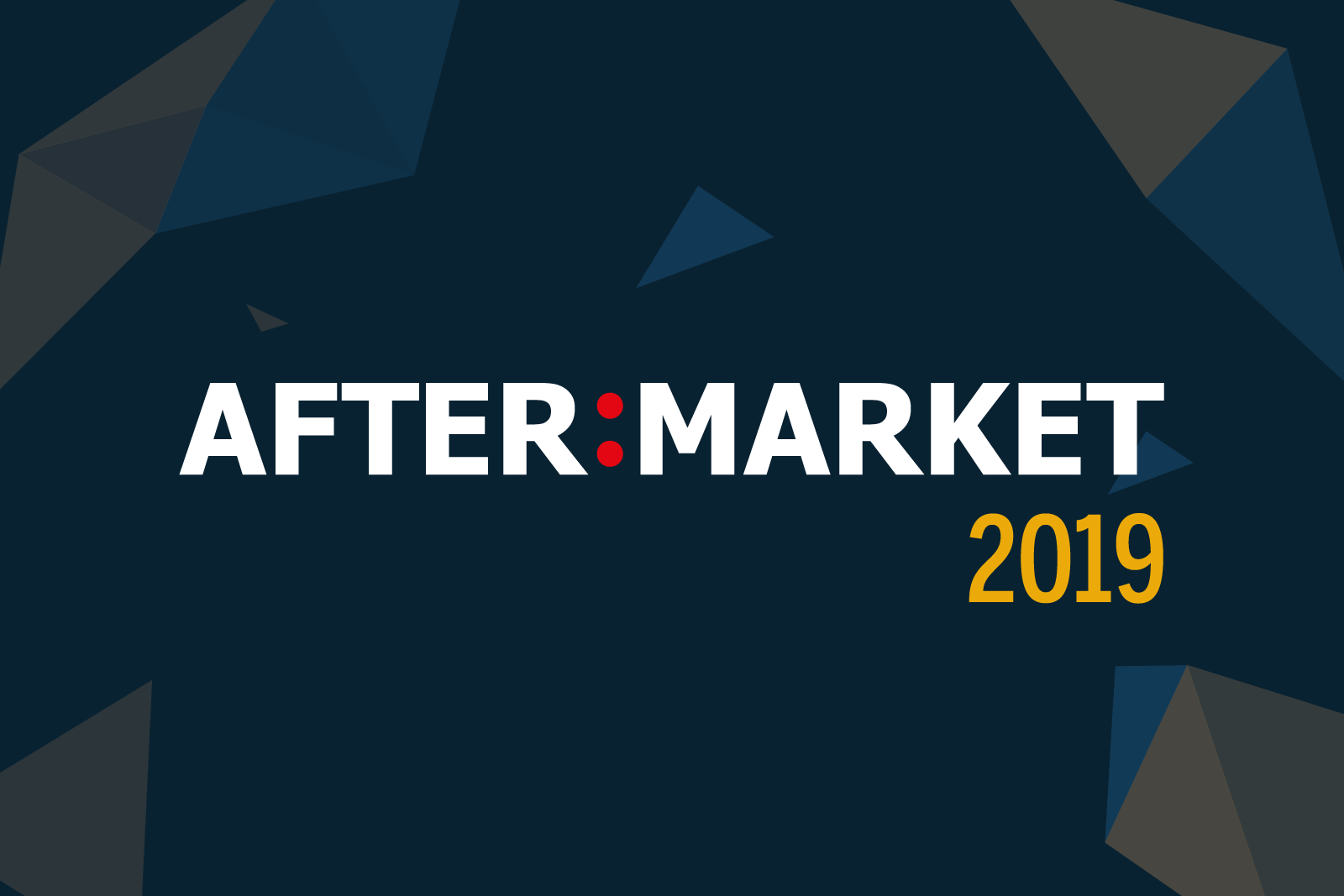Welcome to the last part of the impressions from my first Copperberg event. First of all, if you made it this far; thank you! In case you missed Part 1 and Part 2, make sure to read them. This way, you can get the full picture of sessions, discussions and everything else that happened at Aftermarket 2019

Author Muge Hizal Dogaroglu | Copperberg

Reading time: 6 minutes
Welcome to the last part of the impressions from Aftermarket 2019. First of all, if you made it this far; thank you! In case you missed Part 1 and Part 2, make sure to read them. So, you can get the full picture of everything that happened at Aftermarket.
The last day begins with anticipation (and coffee)
The last day of Aftermarket was essentially a half-day. Starting with amazing presentations of Jessica Hård from Nederman and Fabio Santiago from CNH Industrial, it finished with Todd Snelgrove’s session. After that, we were to get on the busses that would take us to Stockholm and Arlanda Airport. Therefore when I entered the venue in the morning, I could almost sense the anticipation in the air. Was it anticipation to hear the last presentations? Schedule that important meeting before Aftermarket 2019 is over? Or perhaps go home and reflect on the immense amount of information accumulated at the event? All of them? Who knows? I know, I was thinking most of them at once.
After sipping my morning coffee as always, I joined the crowd that moved to the Plenum area. As I was settling, the Panel Discussion initiated by Hamed Hakimian from Vendavo, Patrik Rilby from Scanjet, Navè Orgad and my colleague, Thomas Igou was just starting.
Panel Discussion: Service Transformation Benchmark
The panel discussion started with discussing the results of our Aftermarket 2019 Benchmark Survey Report. The report revealed the current status of Aftermarket and offered insights on the future.
Here is a list of my key takeaways from the discussion:
1. Value-based pricing is trending
When it comes to pricing our report showed two main trends: one being value-based pricing and the other cost-plus. While both had its place, Hamed underlined that it’s harder to defend your value-chain with a cost-plus approach.
Perhaps one of the most optimistic comments about value-based pricing came from Patrik Rilby from Scanjet:
“We made the transition three years ago and it increased our revenue tremendously.”
2. You must change the business model along with the pricing
A key moment from the discussion was to see the results of the report reflected in real life. For instance, the report showed that companies are struggling with adjusting their prices more frequently. Hamed materialized this issue by giving an example from his experience:
“Companies want to maintain their basic pricing solutions at the beginning to not complicate things. They show to their customers that things will be one way. But how can you to convince them when you change your pricing?”
So how does one go about changing prices and make customers accept it?
According to Hamed, it is by communicating to customers that you as a company is changing the whole game. By that he means your relationship with the customers, the delivery systems/logistics and everything else. The key is to communicate this to the customer. If you fail to do that, there is no point in doing it because it won’t bring revenue.
The right mindset is to see yourself as a partner of your customer. Navè Orgad also gave an excellent example of communicating the value to the customers:
“When you sell on a value-based price, you need to show to customers the tangible value. Mature service companies focus on the value of production for their customers. For instance, we would explain the value to our customers: imagine not losing an uptime day. That is a million dollars a day for them. And this is a huge opportunity for them to be more productive.”
3.Attract talent by mission and diversity
IT is becoming more important for the manufacturing industry. Everybody knows this but not everyone realizes who they are competing against for talent. As Thomas explains:
“If your main asset is data you are suddenly competing with Google, Spotify and other tech companies in terms of attracting talent.”
So how does one attract talent in such an environment?
As a fellow millennial, I thought Nave’s input on this issue was on-point:
“You can’t compete with Apple or Google in terms of branding. But millennials want to work with a purpose. If your mission as an organization is to clean the water, for instance, you can work with that. Because a lot of people would like to be involved in it.”
The session ended with Thomas’s call for more diversity in the manufacturing industry to attract talent. Providing a higher purpose and a diverse work environment for employees will help manufacturing companies today and certainly tomorrow.
Todd Snelgrove: Value first, then the price
I wish everyone involved in Aftermarket, or pricing for that matter, had the opportunity to hear Todd Snelgrove’s presentation. And there are several reasons why I feel this way. First of all, he knows value-based pricing by heart. Not only that, he explains it in such a way that you feel like you already knew the topic (although you probably don’t). He backs everything he says by either giving examples from experience, by providing facts from trustworthy sources or both. Last and perhaps more importantly; he is a great speaker. His presentation was literally the last in Aftermarket, an hour-long and I haven’t noticed how the time went by. In the end, there were so many raised hands that Thomas suggested them to find Todd in the bus to Stockholm and ask their questions there!
You might ask, and rightly so, what was it that he talked about. I would say; everything related to creating something of value, communicating this value to your customers in a meaningful way. And then giving them options in regards to pricing. Because as Todd himself says:
“I don’t think we should dictate how customers buy. I think we should give them options. Sometimes it makes sense to buy a car and sometimes it is more reasonable to rent a car or call an Uber. It depends on the context.”
Here is more food for thought from Todd’s presentation:
1.Distinguish ‘willingness to pay’ from ‘ability to pay’
When your customers say ‘no’, there are two reasons. One, your customer doesn’t see the value you offer as a priority. This means they are not willing to pay and there is no point in fighting that. The other reason is the budget, or the lack of, to be more precise. In this case, don’t lose hope. Often times, if a person gives a budget as a reason, that means that they are not convinced and you can work with this. Because if a person believes in your product, they will find a way to get it. Make sure to make it easy for them to see the value of your product.
2.Convince your internal team first and they will convince the customers
Sometimes, companies start their value-based journey without acknowledging why in the first place. When this happens, it is almost certain that they will face issues convincing the customers. As Todd explains, customers buy the confidence and knowledge of a salesperson. So, make sure to convince your sales team first. Explain to them what your offering can do for your customers and they will spread the message.
3.Speak the language of value
To show customers the value of your offering, you need to speak the language of value. Show customers how your product helps them gain revenue or improve productivity. Your customer might be thinking that they are buying a filter. But, let them know: they are not just buying a filter, they are making more profit. This is the part of the mindset shift that will move the companies forward.
Aftermarket 2019: closing thoughts
Following Todd Snelgrove’s presentation and a brief closing speech, Aftermarket 2019 officially came to an end. After grabbing my takeaway lunch, I joined our participants in their way to shuttles. As I stepped inside the bus, I was feeling tired and happy at the same time. I should also say that it was quite amusing to see these experts and high-level professionals chatting and taking selfies throughout the journey as if they were on a school trip. It made me realize, once again, how open and friendly the people at Aftermarket have been.
On the last note, I must say that Aftermarket made me realize the value of our own business at Copperberg. In one of the first meetings I attended at Copperberg, our Managing Director Lisa Bergström explained that our mission is to get the job done for our customers. We provide them with everything they need to accomplish their goals: the knowledge, the thought-leaders, the peers, all in the right landscape.
I truly believe that I just witnessed that at Aftermarket and the feedback I got from the people I spoke with reinforced this idea.
Interested in attending Aftermarket 2020 or other Copperberg events? Make sure to check the agenda of the events that are relevant to you or contact our team.
Bonus tip: Have a look at Todd Snelgrove’s book, “Value first, then price” to learn more about value-based pricing.





























